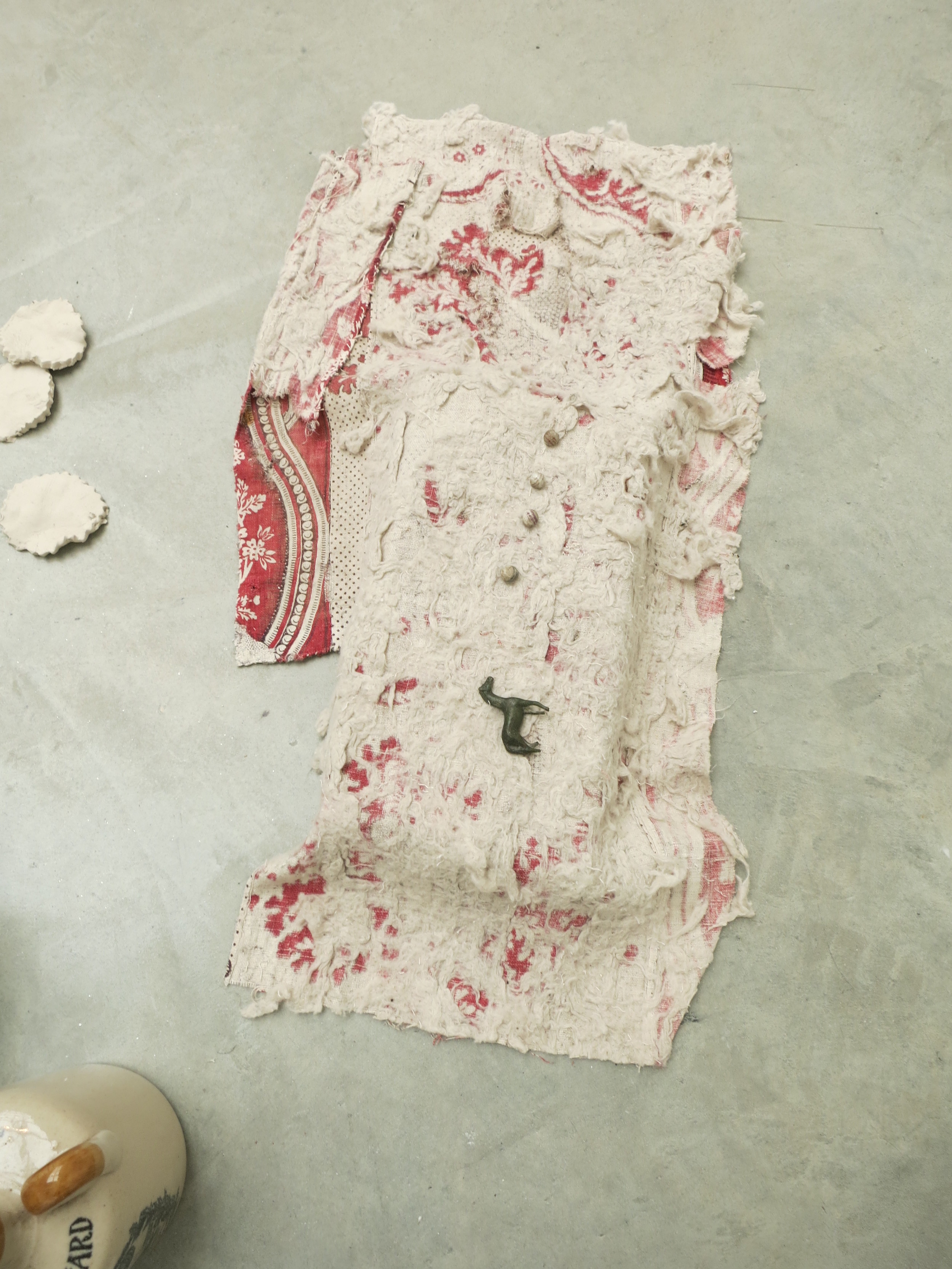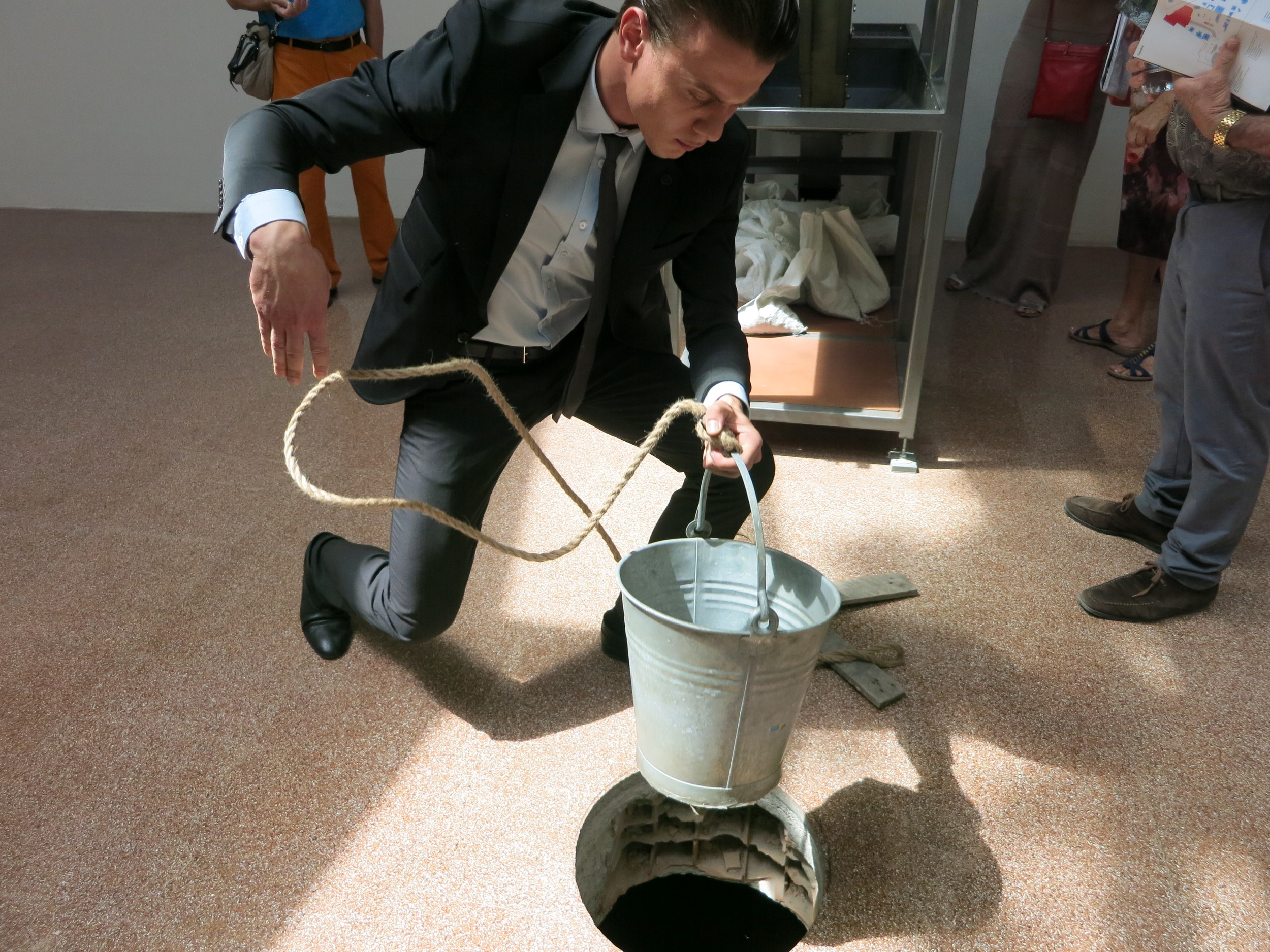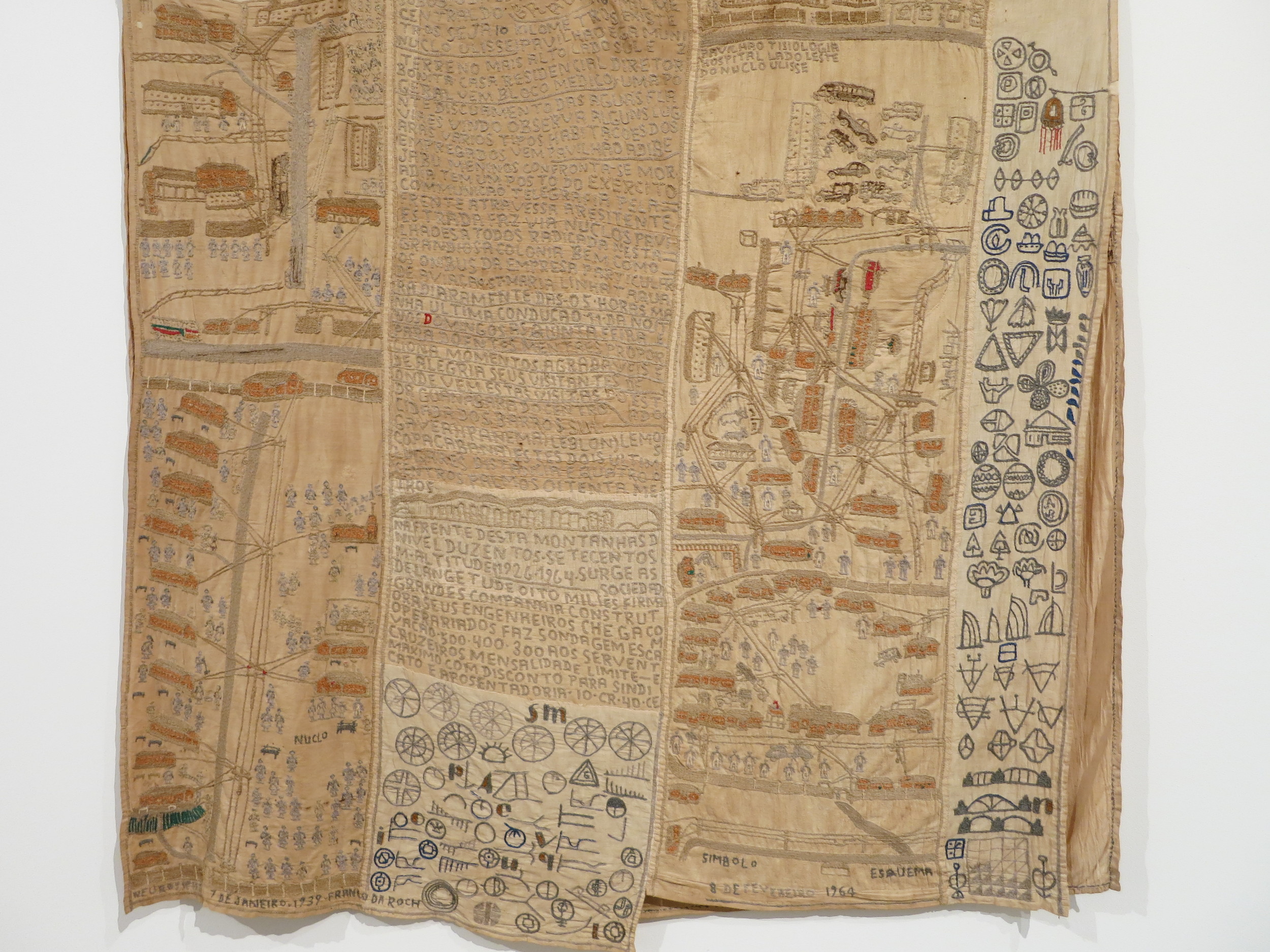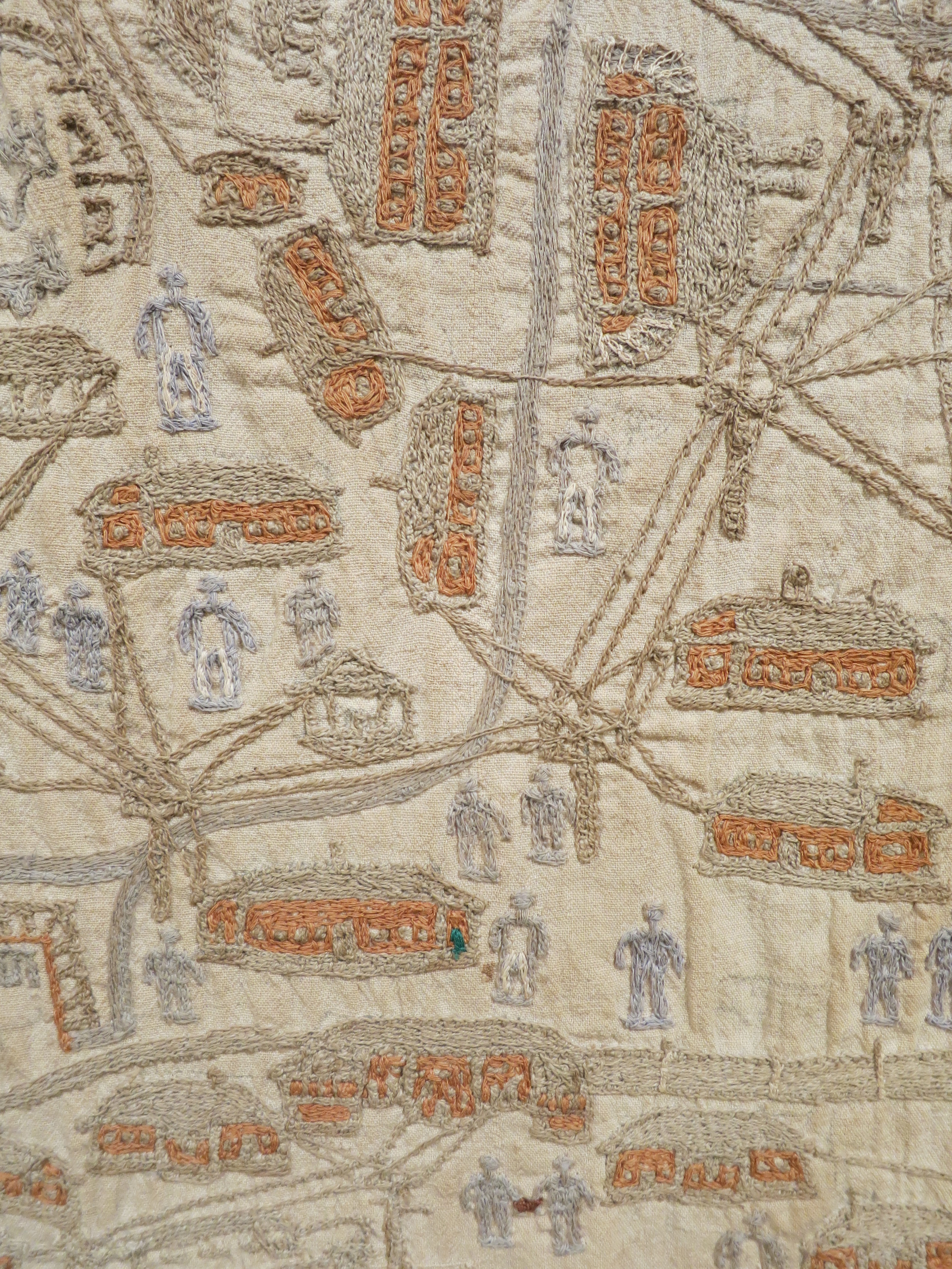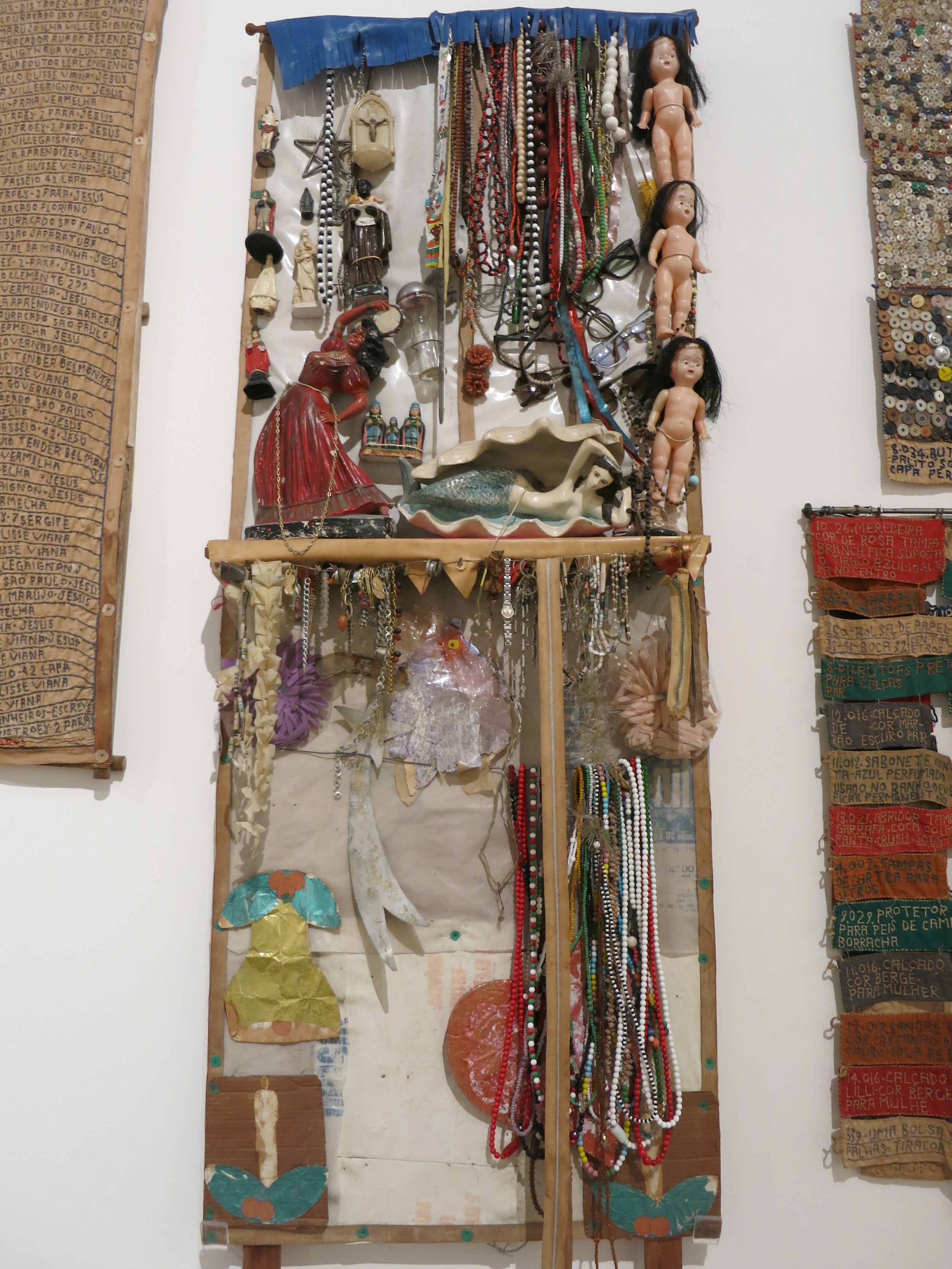We visited Venice for the first time in 2013 and therefore it was also our first visit to a Venice Biennale. There are two main venues for the Biennale - the Giardini (the pavilions for many countries are here, including Australia's) and the centuries old Arsenale (the majority of Venice's maritime trading vessels were built here). The title of this Biennale was 'The Encyclopaedic Palace', chosen by the Biennale's curator Massimiliano Gioni. The title references a design submitted by an Italian-American self-taught artist , Marino Auriti, in 1955 to a US Patents Office for an imaginary museum to house all the worldly knowledge accumulated by the human race. It was never actually built - only the scale model - if it had been realised it would have been 136 storeys and would have covered an area of 16 square city blocks! The model was exhibited a couple of times and then forgotten in a warehouse, only to be resurrected and displayed in the Arsenale for this Biennale. Like Auriti's palace, the 55th Venice Biennale exhibited contemporary artworks as well as historical artifacts and works. We visited every pavilion in the Giardini and saw every work in the stupendous Arsenale! An exhausting programme to set ourselves but everything we saw remains totally memorable for us. And we came across many other sites around Venice that were being used to exhibit works by individual artists. I am only going to share a miniscule number of exhibits with you on my blog.
Moi with my Philip in Venice
The 55th Venice Biennale - Marino Auriti's scale model for an imaginary 'Encyclopaedic Palace' in the Arsenale
Cathy Wilke's installation in the 55th Venice Biennale 2013
Cathy Wilke's installation was in the Central pavilion in the Giardini. She is an Irish artist. Visitors did not have to view this installation on its outskirts - you could actually move into the installation! It was a very enigmatic work. Difficult to give it a 'reading'. Cathy Wilkes has said when writing about her work that it is 'inhabited by both the living and the dead'.
The U.S.A. Pavilion in the Giardini - the 55th Venice Biennale - Sarah Sze's installation titled 'Triple Point (Gleaner) 2013
The 'Gleaner' is Sarah Sze's teetering construction descending from the top of the American Neo-Classical pavilion, outside its main entrance. We had to enter the pavilion from a side door!
Sarah Sze's installation occupied every room in the American Pavilion. She spent weeks in Venice prior to the opening of the Biennale collecting detritus around Venice for this installation. Some of the rooms looked like laboratories. The rooms appeared to be filled with specimens and samples. We call these types of installations 'catalogue-collection' installations. It appears that she has moved huge boulders into the installation (2nd image from the left) but they are made of tyvek which are then painted.
The Zany Cafe in the Giardini - 55th Venice Biennale 2013
Eva Kotatkova's 'Asylum' - 55th Venice Biennale
For this 'Asylum' installation Eva Kotatkova collaborated with patients at the Bohnice psychiatric hospital outside Prague. The installation is populated with the strange visions of psychiatric patients. The metal constructions represent cruel restraints.
The Philip Cox designed Australian Pavilion in the Giardini, Venice. This has been replaced since 2013.
Simryn Gill was the Australian artist represented in the Australian Pavilion for the 55th Venice Biennale
Vadim Zakharov's 'Danae' in the Russian Pavilion in the Giardini, Venice. The man up the ladder represents business people
Zakharov's 'Danae' is a representation of the Danae myth. Danae was seduced by Zeus - Perseus was the result! Zeus always disguised himself when he was intent on seducing a mortal woman. He came in the form of a golden shower to Danae. The installation is on two levels in the Russian Pavilion. Only women were allowed into the lower level. Women had to enter with a transparent umbrella to protect them from the shower of golden coins from the roof above. We women were allowed to keep one golden coin! Men and women were allowed on the upper level. Notice the hole in the floor in the image below. I was so intent on watching the machine taking the coins up to the roof that unwittingly I had moved to the edge of the hole. I happened to look down just in time before I moved- I may not have fallen right through but I would have done some damage. No such thing as Occupational Health & Safety here!
The Arsenale, 55th Venice Biennale. A view of Arthur do Rosario's work
Arthur do Rosario's 'Behind the Curtain'
Arthur Bispo do Rosario was a Brazilian artist who spent 50 years confined to a Psychiatric institution because he'd claimed in 1938 that he'd had a visitation from Christ and a horde of blue angels to tell him that he was to present God at the end of time with the contents of the world that he thought worthy of redemption. He was allowed to move freely around the hospital collecting bibs and bobs and materials for his work. He made over 800 embroideries (traditionally it was the men in his hometown who embroidered the religious banners) and sculptures. Some of his sculptures make reference to his time at sea in the navy.
Papa Ibra Tall's tapestry in the Arsenale -55th Venice Biennale 2013
Papa Ibra Tall's tapestry in the Arsenale -55th Venice Biennale 2013
Papa Ibra Tall's tapestry in the Arsenale -55th Venice Biennale 2013
Papa Ibra Tall's tapestry in the Arsenale -55th Venice Biennale 2013



